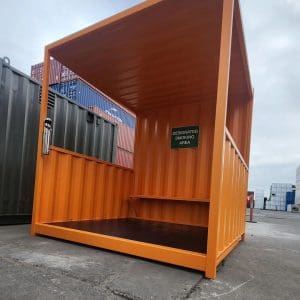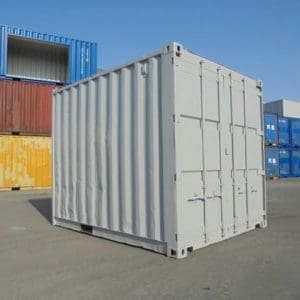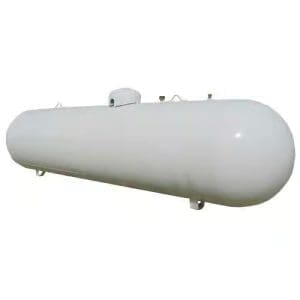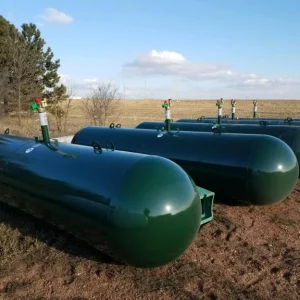30ft shipping containers
Efficiency is key in logistics and supply chain management. One way to achieve this is to use second-hand 30ft shipping containers. These containers offer a cost-effective solution for shipping and Storage needs. They are durable, versatile, and widely available, making them popular among Supply Chain Managers.
However, purchasing second hand shipping containers requires careful consideration. Factors such as the container’s condition, history, and certification status can significantly impact its value and usability.
This article aims to guide you through selecting and purchasing second hand 30ft shipping containers. It will provide practical advice and insights to help you make informed decisions. By understanding the benefits and potential challenges of using second hand containers, you can optimize your logistics operations.
Let’s explore second-hand shipping containers and how they can enhance supply chain management.
On sale products
-
[Repaired] 20ft used container (JR type)
Original price was: $2,500.00.$2,200.00Current price is: $2,200.00. -
10 ft smoke area container
Original price was: $1,500.00.$1,380.00Current price is: $1,380.00. -
10 ft. Modified, front opening, painted gray
Original price was: $2,500.00.$1,800.00Current price is: $1,800.00. -
1000 Gallon Above Ground Propane Tank
Original price was: $7,000.00.$5,000.00Current price is: $5,000.00. -
1000 gallon propane tank for sale (Underground)
Original price was: $5,500.00.$4,200.00Current price is: $4,200.00.
Understanding the Value of Second Hand Shipping Containers
Second hand shipping containers provide numerous advantages beyond initial cost savings. They offer robust security for goods, which is essential in logistics.
These containers are constructed to withstand harsh conditions, ensuring durability and longevity. This durability translates to extended usability in your operations. Purchasing second hand containers is a strategic decision for cost-conscious managers. New containers can be significantly more expensive than their used counterparts.
Beyond cost, these containers present sustainability benefits. Reusing containers minimizes environmental impact, a crucial consideration today. A second hand container retains flexibility for diverse applications. They can adapt to your needs for shipping container for sale, storage, or conversion to mobile facilities.
Here are key benefits of second hand containers:
- Cost Savings: Reduced prices compared to new containers.
- Sustainability: Promotes eco-friendly practices by reusing materials.
- Durability: Made to handle extreme environments and rigorous use.
- Versatility: Suitable for various purposes beyond Shipping Containers for Sale Green Bay, WI.
By understanding these values, logistics managers can make informed choices. Second hand containers offer reliable solutions, aligning cost savings with operational efficiency. As you consider your logistics needs, contemplate the long-term benefits that second hand shipping containers for sale melbourne provide.
Key Considerations When Selecting Second Hand Containers
Choosing the correct second hand shipping containers is crucial for efficient logistics. Not all containers will meet your specific needs. First, assess the condition of the container. Look for structural integrity and potential damage.
Consider the container’s age. Older containers may require more maintenance and have a shorter lifespan. The container’s history is also essential enquire online or contact our dedicated container sales team for more information. Ensure it was used in conditions similar to your intended application.
Check the available customization options 30ft shipping container features. Modifications can enhance functionality to suit precise requirements. Be aware of the seller’s reputation. Working with reliable suppliers can reduce risks associated with purchase.
Here’s what to focus on during selection:
- Condition: Inspect for dents, rust, or floor damage.
- Age: Newer containers often offer better durability.
- Usage History: Prior usage may affect performance.
- Customization: Assess the potential for modifications.
- Supplier Reputation: Choose reliable and certified sellers.
Making informed decisions will mitigate risks and ensure your containers are fit for purpose. This tailored approach can enhance the efficiency and reliability of your supply chain operations.
Inspecting Second Hand Containers
Thorough inspection is vital when acquiring second hand containers. Initial visuals should check for external dents and rust spots. Inspect the interior as well. Look for holes, leaks, and floor wear which can affect cargo security. Evaluate the doors for proper sealing and locking mechanisms. Faulty doors can compromise safety and lead to losses.
If needed, involve professionals for a comprehensive assessment. They can identify less apparent issues that may impact future use.
Certification and Compliance
Certification ensures that second hand containers meet industry standards. This is crucial for maintaining safety and quality.
Containers should comply with international shipping regulations. Verify compliance by checking for a CSC (Container Safety Convention) plate. Compliance also involves meeting local codes, mainly when containers are used for Storage. Understanding these standards is essential for hassle-free operations.
Consult relevant authorities or experts to verify certification. This step helps avoid legal hurdles and ensures smooth logistics processes.
Finally, always confirm documentation and certification before purchasing. Proper records are indicative of legitimate sales.
Cost-Effectiveness of Second Hand 30ft Containers
Second hand 30ft shipping containers offer significant cost savings. They are generally priced far below their new counterparts.
These savings do not necessarily come at the expense of quality. Many second hand containers remain robust and reliable.
Investing in used containers allows companies to allocate funds to other essential logistics functions, enhancing overall operational efficiency. Savings from purchasing second-hand containers can be redirected toward improvements or scaling efforts, which benefits strategic planning.
Comparing New and Used Container Prices
However, ensure the containers meet your operational requirements. This will provide the investment with maximum value. Second-Hand Containers for Sale Melbourne.
New shipping containers can be expensive, reflecting their unblemished condition and longevity. They are priced at a premium.
In contrast, second hand containers typically cost less locking bars. Prices vary based on age, condition, and size. While used containers are cheaper, they may require repairs or modifications. These costs can affect overall savings.
Despite potential additional costs, used containers remain a cost-effective choice. They are ideal for businesses that need to balance quality and budget.
Evaluating price differences involves considering maintenance and modification costs. This offers a more accurate comparison and informs better purchasing decisions.
Environmental Benefits of Reusing Shipping Containers
Using second hand shipping containers supports environmental sustainability. Reusing existing materials lowers demand for new manufacturing.
Every reused container saves resources otherwise needed for production, contributing to a substantial reduction in carbon footprint. Repurposing containers also minimizes waste. It prevents the need for disposal, reducing landfill contributions and associated environmental impacts.
Environmental benefits extend beyond raw material conservation. They promote sustainable business practices aligned with green initiatives. By choosing reused containers, companies demonstrate commitment to eco-friendly operations. This can enhance brand image and appeal to environmentally conscious clients.
Integrating second-hand containers exemplifies responsible resource management and is a practical step toward achieving sustainability goals in logistics.
Sourcing and Availability of Second Hand Containers
Several factors influence the availability of second-hand shipping containers for sale in Winston-Salem, NC. These include location, market demand, and industry trends. Understanding these factors helps in planning efficient procurement.
Market research is crucial for identifying potential sources. Assessing container availability in various regions and exploring different channels is vital. Auctions, online marketplaces, and direct seller contacts are familiar sources.
Networking within industry circles can also lead to reliable leads. Building relationships with suppliers ensures consistent availability. This flexibility is essential to accommodate fluctuating operational needs and avoid shortages.
Finding Reputable Suppliers
Identifying reputable suppliers for second-hand containers is essential. Look for suppliers with positive reviews and industry experience.
Verify their credibility through trade associations or past clients. Building trust ensures quality and reliability in container sourcing.
Customization and Modification Options
Second-hand shipping containers offer a world of customization possibilities. They can be modified to suit specific Storage or transport needs, ranging from simple additions to significant structural changes.
Adding shelving, ventilation, and insulation can enhance functionality. These modifications help create ideal Storage environments. Tailoring containers to cargo needs increases operational efficiency.
Structural changes might be necessary for more complex uses. Converting containers into portable offices or workshops is common, and this adaptability makes them valuable assets in various industries.
Integrating Second Hand Containers into Your Supply Chain
Integrating second hand containers can boost supply chain flexibility. Their versatility supports various shipping and storage needs. With proper planning, they seamlessly enhance operations.
Consider the logistics of incorporating these containers. Assess how they align with existing processes and facilities. Address transportation and Storage configurations for optimal results.
Furthermore, container sizes and types relative to cargo should be evaluated. Tailor usage to capitalize on their strengths. This strategy improves efficiency and reduces costs across the board.
Case Studies: Successful Use of Second Hand Containers
Several businesses have thrived using secondhand containers. A retailer reduced costs by converting containers into Storage units, improving inventory management without requiring a hefty capital investment.
A construction firm utilized modified containers as on-site offices. This setup provided flexible, mobile workspaces tailored to projects. Their adaptability resulted in significant savings and operational ease.
In another instance, a logistics company expanded its fleet with second hand containers. They optimized shipping routes and increased cargo capacity. These examples highlight their cost-effective and transformative potential.
Conclusion: Maximizing Efficiency with Second Hand Containers
Second hand shipping containers offer substantial benefits for supply chain managers. They provide cost-effective solutions that align with budget constraints. Their adaptability supports diverse logistical needs.
Choosing the proper containers enhances overall operational efficiency. Careful evaluation of conditions and certifications ensures reliability. Reputable suppliers can further bolster confidence in sourcing.
Embracing second hand options also supports sustainable practices. These containers contribute to reduced environmental impact. Their integration can lead to a more agile, responsive supply chain.





